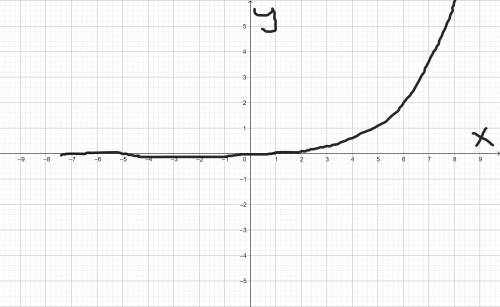
Physics, 31.10.2020 14:40 whitethunder05
A particle is moving with a constant velocity in the +x
+
x
-direction. When the particle reaches the origin, a constant force is exerted on it in the +y
+
y
-direction. Which of the following graphs best shows the path the particle will follow?

Answers: 2


Another question on Physics

Physics, 21.06.2019 18:10
After the near spacecraft passed mathilde, on several occasions rocket propellant was expelled to adjust the spacecraft's momentum in order to follow a path that would approach the asteroid eros, the final destination for the mission. after getting close to eros, further small adjustments made the momentum just right to give a circular orbit of radius 45 km (45 × 10^3 m) around the asteroid. so much propellant had been used that the final mass of the spacecraft while in circular orbit around eros was only 545 kg. the spacecraft took 1.04 days to make one complete circular orbit around eros. calculate what the mass of eros must be.
Answers: 1

Physics, 21.06.2019 23:00
Follow these directions and answer the questions. 1. set up the ripple tank as in previous investigations. 2. bend the rubber tube to form a "concave mirror" and place in the ripple tank. the water level must be below the top of the hose. 3. generate a few straight pulses with the dowel and observe the reflected waves. do the waves focus (come together) upon reflection? can you locate the place where the waves meet? 4. touch the water surface where the waves converged. what happens to the reflected wave? 5. move your finger twice that distance from the hose (2f = c of c, center of the curvature) and touch the water again. does the image (the reflected wave) appear in the same location (c of c)? you may have to experiment before you find the exact location. sometimes it is hard to visualize with the ripple tank because the waves move so quickly. likewise, it is impossible to "see" light waves because they have such small wavelengths and move at the speed of light. however, both are examples of transverse waves and behave in the same way when a parallel wave fronts hit a curved surface.
Answers: 1

Physics, 22.06.2019 05:30
An object weighs 40n in air, weighs 20n when submerged in water and 30n when submerged in a liquid of unknown density. what is the density of the liquid?
Answers: 2

Physics, 22.06.2019 08:00
The arrival of in the early days of europa’s existence could have formed its ocean. it is likely that the water experienced similar to earth. it is also possible that this water is retained beneath europa’s surface and in its atmosphere due to europa’s . 1.) a. precipitation b. water vapor c. icy debris 2.) a. gravitational compression b. biochemical cycling c. radiogenic heating 3.) a, gravity b. magnetic field c. heat energy for plato
Answers: 3
You know the right answer?
A particle is moving with a constant velocity in the +x
+
x
-direction. When the partic...
x
-direction. When the partic...
Questions

Mathematics, 10.02.2021 08:10

Mathematics, 10.02.2021 08:10


Mathematics, 10.02.2021 08:10

Chemistry, 10.02.2021 08:10



Mathematics, 10.02.2021 08:10

Mathematics, 10.02.2021 08:10


Mathematics, 10.02.2021 08:10



Mathematics, 10.02.2021 08:10

Mathematics, 10.02.2021 08:10

Social Studies, 10.02.2021 08:10

Mathematics, 10.02.2021 08:10

Mathematics, 10.02.2021 08:10


Chemistry, 10.02.2021 08:10




